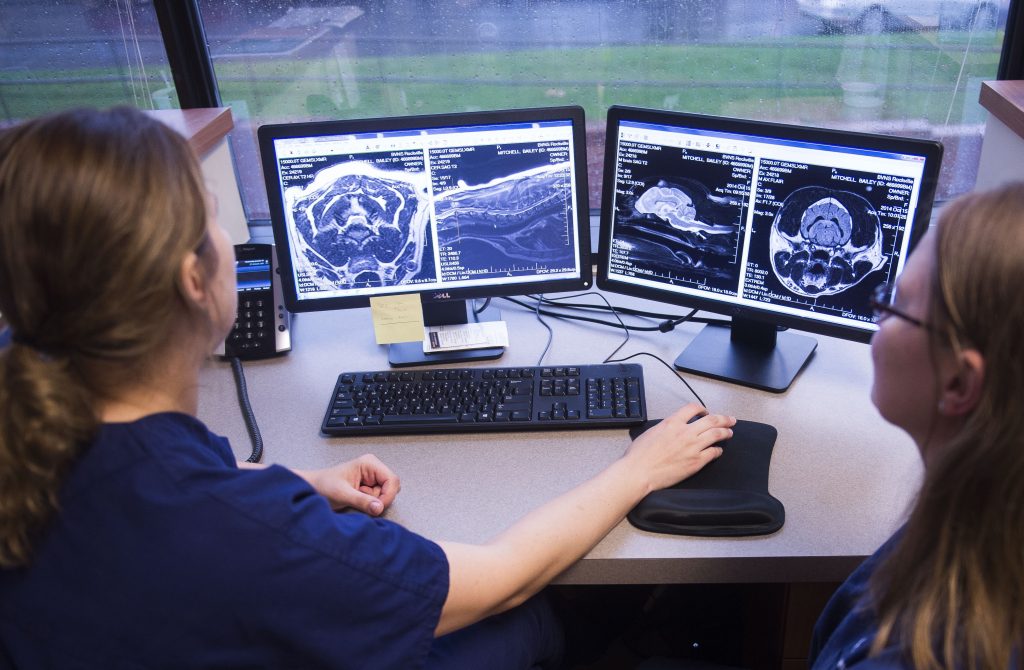Choosing the proper test is critical to the care of your patient. However, your decision can be based on many factors.
MRI is generally the gold standard. In situations where results are extremely time sensitive (head trauma, disk disease), MRI is not available, cost is a limiting factor, or time under anesthesia is critical then a CAT scan may be a better diagnostic test. Occasionally, both tests are indicated if the disease might involve both bone and soft tissue.
Our Medical Director, Dr. Uzzle is available to discuss questions on which test is recommended in a particular situation, he can also draw on his extensive experience and on the expertise of a team of board-certified radiologists.
For more information please contact us and refer to the following general guidelines for selecting MRI and/or CAT Scanning.
General guidelines for selecting MRI and/or CAT Scanning
| Problem | Location | MRI | CAT Scan |
| Seizure | Brain | Best test | Useful if disease thought to extend into the brain from a boney structure and assessing ventricle size |
| Poor balance / Vestibular disease | Brainstem | Best test | Useful for ear disease |
| Back or neck pain Weak and wobbly Incontinence | Spinal Cord | Best test | Useful for visualizing mineralized disk material in spinal canalCan be combined with contrast study (myelogram) |
| Lameness | ElbowComplex fracture | Best test | |
| Lameness | Joints (shoulder, knee, others) | Best test | |
| Portosystemic shunt | Liver | MRI and CAT scan thought to be equally useful | |
| Nasal discharge | Nasal cavity and sinuses | MRI and CAT scan thought to be equally useful | |
| Cancer or other diseases in thoracic cavity | Lungs | Best test | |
| Cancer and disease in abdomen | Abdomen | Best test | |
| Atlanto-axial subluxation | Vertebral malformations | Vertebrae and spinal cord | MRI best for spinal cord imaging but reconstruction CT best for defining location of the vertebrae |

